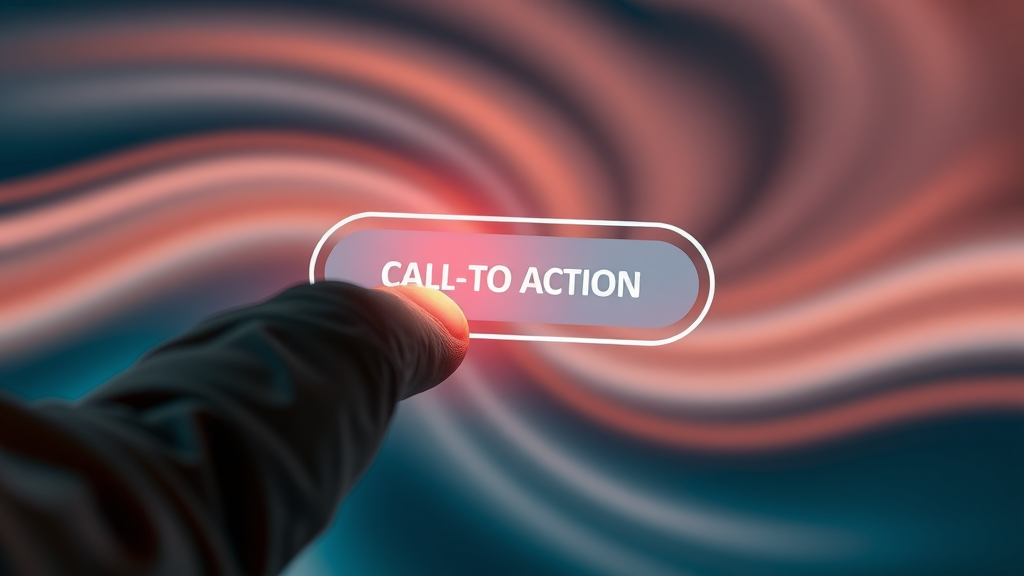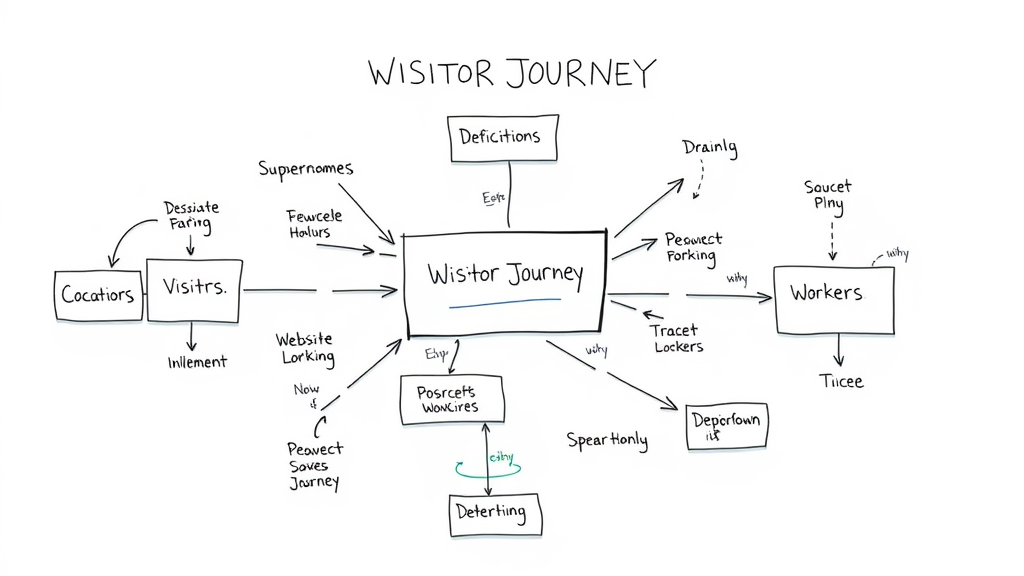Did you know that increasing your website conversion rate by just 1% can add thousands—or even millions—to your yearly profits? If you’re searching for ways to turn more website visitors into paying customers, you’re about to discover a powerful roadmap. In this comprehensive guide, you’ll learn the strategies, tools, and real-world secrets behind website conversion rate optimization (CRO), ensuring that every click on your web page drives your business closer to success.

What You'll Learn
- Unlock the secrets behind conversion rate optimization as the most effective profit lever
- Understand key metrics like conversion rate , bounce rate, and more
- See actionable optimization strategies and practical web page improvements
- Access expert quotes, FAQs, and proven tips to boost conversion rates in 2024
“Increasing your website conversion rate by just 1% can add thousands—or even millions—to your yearly profits.”
Why Website Conversion Rate Optimization is the Ultimate Profit Lever
Website conversion rate optimization is an often overlooked growth strategy that can deliver exponential results for any business. While driving more traffic to your site certainly matters, maximizing the value you extract from your existing audience has a far greater—and faster—impact on your bottom line. Imagine doubling your sales figures without spending an extra dollar on ads. That’s the superpower of smart rate optimization strategies.
- Discover how website conversion rate optimization elevates business performance
- Master rate optimization strategies to turn more website visitors into paying customers
- Explore actionable examples of landing page and web page improvements
- Learn data-driven CRO strategy for sustainable ROI
With conversion rate optimization , every website visitor represents a potential customer. When you fine-tune your landing pages or product page structure, you’re directly impacting your conversion goal and ensuring you make the most out of every site visitor. This approach isn’t limited to e-commerce giants; even a small improvement in your website conversion rate can have an outsized effect, especially for businesses operating at lower margins.
“Increasing your website conversion rate by just 1% can add thousands—or even millions—to your yearly profits.”
Understanding Website Conversion Rate Optimization and Conversion Rate Basics
Defining Website Conversion Rate Optimization for Modern Businesses

Website conversion rate optimization (CRO) is the systematic process of increasing the percentage of website visitors who complete a desired action—whether it’s making a purchase, subscribing to a newsletter, or filling out a contact form. CRO isn’t just about tweaking a button color; it’s a data-driven discipline that analyzes how users move through your site, what actions they take, and what barriers prevent them from achieving your business goals. By understanding each step in your visitor journey, you can identify friction points and deploy targeted strategies to boost conversion.
For modern businesses, CRO strategy involves a continual cycle of measuring, testing, and refining. The most successful brands track every key interaction, regularly update their landing page and product page designs, and optimize the customer experience from the very first impression to the checkout process. Conversion rate optimization is integral for sustainable growth, allowing companies to scale profitably by maximizing the efficiency of their existing marketing efforts.
What Are Conversion Rates, and Why Do They Matter?
A conversion rate measures the percentage of visitors who complete a conversion goal out of the total number of visitors to your website. For example, if 2 out of 100 visitors make a purchase, your conversion rate is 2%. This metric is a direct indicator of your website’s ability to persuade and engage its audience. Other supporting metrics—like bounce rate and average session duration—offer insight into how visitors are interacting with your site and where you can improve conversion.
The true power of conversion rates lies in their impact on profitability. With a higher conversion rate, you can achieve far more with the same amount of traffic: more sales, more leads, and better returns on all your marketing activities. Understanding the basics of conversion rate optimization enables your team to pinpoint opportunities for growth, adapt to evolving audience behaviors, and respond faster to competitive threats in your industry.
| Metric | Description | Impact on Conversion Rate Optimization |
|---|---|---|
| Conversion Rate | Percentage of site visitors who complete a goal | Core measurement of website conversion success |
| Bounce Rate | Percentage of visitors who leave after one page | High bounce can signal conversion issues |
| Average Session Duration | Time spent on site | Longer times can indicate better user experience, leading to improved conversion |
Key Principles Behind Successful Website Conversion Rate Optimization
User Experience: The Foundation of Every Rate Optimization Process

The user experience is the bedrock upon which all rate optimization strategies are built. No matter how well you design your offers or structure your web page, if visitors struggle to find what they’re looking for, your conversion rates will suffer. Focus on clear navigation, fast page load times, coherent content, and mobile device accessibility. Every element on your site should feel intuitive—for both first-time visitors and repeat customers.
High-performing websites go beyond aesthetics. The interface should anticipate user needs, reduce friction at each step, and reinforce trust through cues like testimonials, secure payment badges, and easy-to-access customer support. Whether you’re working on an e-commerce product page or a SaaS signup, delivering a frictionless, joyful user experience leads to higher rates of engagement and improved conversion.
Role of Landing Pages and Product Page Structure
Both landing pages and product page structure are critical to conversion rate optimization . A targeted landing page, tailored to your campaign or keyword, allows you to focus a visitor’s attention on a single, high-value action. In contrast, a well-structured product page provides essential information—images, features, pricing, reviews—in a format that guides visitors organically toward a purchase.
The most effective rate optimization strategies involve aligning your web page layout with your audience’s expectations and preferences. Use compelling headlines, clear value propositions, and smartly placed calls to action for each conversion goal. Remove unnecessary distractions and always ensure every click on your landing page moves a visitor closer to converting.
Mapping the Visitor Journey for Maximum Conversion
Mapping the visitor journey allows you to visualize how real users experience your site from entry to exit. By understanding the key steps, motivations, and stumbling blocks site visitors face, you can design a more coherent flow that keeps them engaged and steadily advances them toward your conversion goal.
Use tools like heatmaps and session recordings to analyze behavior, and collect feedback directly from your audience. This continuous feedback loop is fundamental to embedding conversion optimization and user experience improvements at every touchpoint, whether it’s a first-time homepage visitor or a loyal customer exploring new product pages.
“If you don’t understand your users’ needs, your website conversion rate optimization will never reach its full potential.” – Industry Expert
Conversion Rate Optimization Strategies That Work in 2024
The digital landscape evolves rapidly, and conversion rate optimization strategies must keep pace. What worked last year might not deliver the same return today. To boost conversion and stay ahead, your CRO strategy must embrace personalization, speed, persuasive messaging, and analytics-driven experimentation.
Personalized Web Page Content to Improve Conversion Rate

Today’s website visitors expect an experience tailored specifically to them. Leveraging user data to show relevant offers, personalized product recommendations, and location-specific information instantly increases engagement. When website visitors see content that matches their interests or previous activity, their likelihood to take a desired action rises.
Personalization also includes dynamic headlines and smart segmentation—serving different landing page variations based on user behavior. From first-time visitors to return customers, a personal touch can improve your conversion rates dramatically. Start by segmenting your audience and deploying personalized messages, images, and even checkout flows for each group.
Fast, Responsive Design to Boost Conversion Rate Across Devices
In 2024, more users are browsing and shopping from a mobile device than ever before. Fast-loading, fully responsive sites are not just a convenience—they’re a necessity for conversion optimization. A slow or broken mobile experience can cause bounce rates to skyrocket and conversion rates to plummet.
Invest in mobile-first web design, optimize images, and eliminate unnecessary scripts that slow down page loads. Test your website on smartphones and tablets, ensuring that forms, buttons, and content display flawlessly. A seamless experience, no matter the device, removes obstacles for users and unlocks hidden opportunities to increase conversions.
Persuasive Calls to Action for Higher Website Conversion

A well-crafted call to action (CTA) connects user intent to your business objective. Strong, benefit-driven CTAs like “Start Free Trial,” “Get My Discount,” or “See Plans & Pricing” offer clarity about the desired action you want the site visitor to take.
Use contrasting colors, strategic placement above the fold, and concise copy. Test multiple CTA versions—for text, design, and placement—using A/B testing to optimize for your specific conversion goal. The right CTA can move a visitor from hesitation to action, propelling your website conversion rate to new highs.
A/B Testing: The Heart of Successful Conversion Rate Optimization
A/B testing —also known as split testing—is the process of presenting two or more web page variants to your audience and measuring which performs better. Every element of your landing page, from headlines to images to CTA buttons, can be split tested. Robust A/B testing ensures your decisions are guided by real data, not guesswork.
Build a schedule for continual experimentation, using clearly defined hypotheses and measurable outcomes. With A/B testing as a foundation of your CRO strategy, you’ll avoid costly missteps, refine your UX, and systematically improve your average conversion rate.
Reducing Friction on Product Pages and Landing Pages
Conversion friction refers to any obstacle that causes a visitor to abandon their buying journey. On product pages , look for complex forms, unclear pricing, or missing information. On landing pages , watch for clutter, too many steps, or overwhelming choices.
Minimize required fields, streamline checkout or signup processes, and remove distracting popups. Display clear trust signals and offer multiple payment methods to increase user confidence. Every friction point you eliminate helps move more website visitors to your desired conversion goal.
Analyzing Websites: Tracking Metrics to Prove Conversion Growth
Proving the effectiveness of rate optimization strategies comes down to data. Robust analytics allow you to prove conversion growth and diagnose exactly where your site wins—or loses—potential customers. It’s not just about watching your conversion rate rise, but understanding why certain actions deliver better results.
Essential Website Conversion Rate Optimization Metrics
| Metric | Tool | Goal |
|---|---|---|
| Conversion Rate | Google Analytics, Hotjar | Measure site performance |
| Average Conversion Rate | Industry Benchmark | Compare to competitors |
| Bounce Rate | Analytics Suite | Identify potential conversion barriers |
Track and analyze every change with the right measurement tools. Set up goals within Google Analytics, monitor sessions and outcomes with Hotjar, and compare your numbers to industry standard average conversion rates. By watching the right KPIs, you’ll find improvement opportunities and prove the ROI of conversion rate optimization to decision makers.
User Journey Analytics: Visualizing Site Visitors’ Paths

User journey analytics tools map the steps visitors take, from the first click to final conversion. Visual journey diagrams reveal where interest peaks, where users get confused, and where drop-offs occur. These insights are vital for prioritizing your next optimization strategies.
Investing in journey analytics offers in-depth behavioral data that’s hard to capture with basic metrics alone. Use these findings to streamline navigation, create frictionless flows, and personalize touchpoints for higher user satisfaction and more conversions.
15 Proven Ways to Boost Conversion Rate and Deliver Business Results
- Simplify your landing page design
- Improve site speed
- Leverage social proof on product pages
- Optimize CTAs for your conversion goal
- Remove friction from checkout flows
- Test different offers for website visitors
- Use retargeting for exiting site visitors
- Personalize web page messaging
- Enhance mobile user experience
- Use trust signals and testimonials
- Highlight unique selling points clearly
- Segment users with smart popups
- Reduce form fields for conversions
- Leverage urgency and scarcity
- Refine all content based on conversion rate optimization data
“Optimizing your conversion rate is a science—measure, test, refine, repeat.” – Top CRO Specialist
How to Build a CRO Strategy for Sustainable Website Conversion Growth
Sustainable growth in website conversion comes from a holistic, data-driven approach to rate optimization. Building a CRO strategy means setting measurable goals, developing actionable roadmaps, and fostering a culture of experimentation and learning within your team.
Setting Measurable Conversion Goals Aligned with Business Outcomes

Start every CRO strategy with clear, outcome-focused goals. Are you aiming to increase product sales, boost newsletter signups, or reduce abandoned carts? Define each conversion goal in line with broader business KPIs. Break down those goals into smaller, actionable metrics so you can track incremental progress and demonstrate proven conversion gains quickly.
Make sure your measurement structure allows you to attribute results to specific changes, like product page redesigns or A/B tested CTA buttons. When goals are concrete, your team remains focused, and it’s easier to prove the business value of every optimization initiative.
Developing a Data-Driven Optimization Roadmap
A winning CRO strategy relies on a continuous loop of discovery, testing, and refinement. Collect user data, survey your audience, and examine analytics for quick-win opportunities. Map your most valuable user flows—from ad click to checkout or sign-up—and prioritize improvement based on potential impact.
Set a testing calendar with prioritized hypotheses, and use evidence from A/B tests, heatmaps, and user journey analytics to inform every decision. A data-driven roadmap eliminates guesswork and aligns your team’s activities with what drives higher conversion rates and ROI.
Aligning CRO with SEO for Comprehensive Rate Optimization

While conversion rate optimization makes the most of your current visitors, SEO helps you attract more qualified traffic. The most successful digital businesses integrate both, ensuring every new site visitor lands on a page built to convert.
Use SEO to drive targeted, high-intent traffic, then deliver on their expectations with pages optimized for rate optimization. Combined, these disciplines enhance your website’s performance end-to-end—drawing in users who are ready to take action and giving them a seamless path to every conversion goal.
Continuous Learning: Staying Ahead with Conversion Rate Optimization Trends
Digital trends move fast—from new AI-powered personalization to fresh UX design patterns. Foster a company culture that values ongoing learning, experimentation, and review. Follow CRO experts, attend webinars, and regularly evaluate the latest optimization strategies and technologies.
Stay curious and nimble. Your willingness to adapt and innovate with new rate optimization strategies will keep your conversion rates above industry averages, no matter how the marketplace shifts.
Case Studies: Real-World Website Conversion Rate Optimization Success Stories
From Low Conversion Rate to High-Performing Product Pages
Consider a leading e-commerce retailer who struggled with a low website conversion rate on their product pages. After reworking the product page structure—simplifying images, adding clear CTAs, and integrating customer reviews—they saw their average conversion rate nearly double in 60 days. These changes also reduced bounce rates and increased the number of conversions from both new and returning visitors.
The takeaway: even small, strategic changes can yield exponential improvement and deliver measurable ROI when they directly support the goals of your rate optimization strategies.
Landing Page Optimization That Quadrupled Website Conversion

In another real-world example, a SaaS brand applied rigorous split test campaigns on their main landing page. By testing benefit-driven headlines, streamlined signup fields, and social proof elements, their conversion rate optimization strategy resulted in a 4x jump in new signups. Personalized follow-ups increased conversions even further, proving the ongoing power of continual rate optimization.
These case studies demonstrate that both landing pages and product pages are fertile ground for targeted CRO strategy, no matter your business model or industry.
How User Experience Overhauls Delivered 80% Conversion Rate Increase
A B2B firm realized site visitors consistently abandoned their contact form. After a comprehensive user experience audit, they rebuilt the web page with larger input fields, reassuring trust signals, and mobile device optimizations. The result? An 80% lift in conversion rates, proving how powerful UX improvements can be for every visitor demographic.
Focus on understanding your specific target audience, resolving pain points, and building an agile optimization roadmap. Every upgrade lays the foundation for your next win in website conversion rate optimization.
“Numbers don’t lie—real-world website conversion rate optimization can yield exponential ROI.”
Common Pitfalls in Website Conversion Rate Optimization and How to Avoid Them
Ignoring User Experience in Rate Optimization Initiatives
One of the most significant — and most common — mistakes in conversion rate optimization is neglecting to center user experience. Even the most innovative offers or visually striking designs fail if they aren’t intuitive or easy to use for your specific audience. Engage in regular UX audits and gather user feedback to reveal hidden pain points that may be slowing your conversion rates.
Underestimating Analytics When Trying to Improve Conversion
Focusing only on visible changes, like headlines or images, often overlooks deeper issues in your conversion funnel. If you don’t leverage analytics tools to track how every change impacts your site visitors, it’s nearly impossible to prove conversion gains or diagnose persistent weaknesses. Make analytics the cornerstone of your CRO strategy at all times.
Overcomplicating the Landing Page Instead of Streamlining
Too many form fields, multiple conflicting CTAs, or distracting graphics create friction that drives users away. Simplicity wins when it comes to landing pages and product pages. Focus visitors on a single conversion goal per page and remove any obstacles that might interrupt their journey to action.
Neglecting Mobile Users in Website Conversion Planning

With mobile traffic surpassing desktop in many industries, ignoring mobile device optimization is a direct hit to your bottom line. Ensure all forms, images, and calls to action are fully functional and accessible on any device, or risk losing a significant share of potential conversions.
Use mobile analytics, responsive testing, and feedback tools to surface and fix mobile-specific conversion barriers on all key web pages.
Tools and Resources for Powerful Website Conversion Rate Optimization
Top CRO Tools for Tracking and Rate Optimization
The best conversion rate optimization programs are built on robust data. Tools like Google Analytics offer comprehensive insights, while platforms like Hotjar , Optimizely , Unbounce , VWO , and Crazy Egg enable deeper experimentation, journey mapping, and real-time user feedback.
Use these platforms together to identify bottlenecks, launch split tests, refine your landing page or product page content, and benchmark your average conversion rate against industry peers. The result is a holistic approach to CRO that adapts as your audience and goals evolve.
Best Practices for Ongoing Conversion Rate Optimization Success
- Google Analytics
- Hotjar
- Optimizely
- Unbounce
- VWO
- Crazy Egg
Pair leading CRO tools with best practices—constant testing, regular audits, and staying aligned with your conversion goals. Always be ready to iterate based on insights from your analytics and real user behavior.
Addressing People Also Ask in Website Conversion Rate Optimization
What is website conversion rate optimization?
Website conversion rate optimization refers to the process of systematically increasing the percentage of website visitors who take a desired action—such as making a purchase, filling out a form, or subscribing to a newsletter—by analyzing and improving key elements like landing pages, web page structure, and overall user experience.
How do you improve the conversion rate of a website?
To improve the conversion rate of a website, focus on user experience enhancements, streamline the user journey, optimize landing and product pages, use persuasive calls to action, minimize friction in conversion flows, and apply A/B testing with analytics to guide rate optimization strategies.
What is a good conversion rate for a website?
A good conversion rate for a website varies by industry and traffic source but typically ranges between 2% and 5%. Top-performing sites with expert website conversion rate optimization can reach conversion rates above 8%.
What is CRO and SEO?
CRO stands for Conversion Rate Optimization, which focuses on increasing the percentage of website visitors who convert into leads or customers. SEO (Search Engine Optimization) improves a website’s visibility and ranking in search engines, driving more qualified traffic for conversion rate optimization to transform into business results.
Frequently Asked Questions on Website Conversion Rate Optimization

How often should I review my website conversion rate optimization strategy?
At a minimum, review your conversion rate optimization strategy quarterly, but ideally revisit it every month as new analytics and user insights become available. Ongoing monitoring enables rapid adaptation in response to shifting user behaviors and marketplace trends.
What are the most important metrics for tracking conversion rate optimization success?
Focus on metrics such as conversion rate, bounce rate, average session duration, average conversion rate by channel, and segment-specific goal completions. Regularly review funnel drop-off points and heatmap data to identify real-time opportunities to improve conversion.
Can small businesses benefit from professional website conversion rate optimization?
Absolutely—CRO isn’t reserved just for large enterprises. Small businesses may see the greatest ROI from even minor improvements, as local audiences are typically smaller and each conversion delivers greater proportional value. Professional CRO can quickly double or triple lead generation for SMBs.
How does website design impact conversion rate optimization?
Website design strongly influences user trust, engagement, and ease of navigation. Clear structure, fast load times, strategic CTAs, and visually accessible layouts all contribute to a frictionless user experience that drives higher conversion rates.
Transform Your Digital Results Today
Start implementing proven website conversion rate optimization techniques to maximize every site visitor’s value and gain a competitive edge. Adopt a continuous process of testing, refining, and adapting your conversion rate optimization strategy for long-term digital success.
Take action: Begin optimizing your website today—define your goals, run your first test, and track every improvement for compounding business results.
To further enhance your understanding of website conversion rate optimization (CRO), consider exploring the following authoritative resources:
- “Conversion Rate Optimization: 17 High-Impact Strategies” ( wordstream.com )
This article provides actionable strategies to improve your website’s conversion rates, including tips on page load speed, mobile optimization, and effective call-to-action placements.
- “Conversion Rate Optimization (CRO): The Complete Guide” ( vwo.com )
This comprehensive guide delves into the fundamentals of CRO, offering insights into user experience design, A/B testing methodologies, and the importance of page load speed in enhancing user engagement and conversions.
By delving into these resources, you’ll gain a deeper understanding of effective CRO techniques and how to implement them to maximize your website’s performance.
 Add Row
Add Row  Add
Add 




Write A Comment